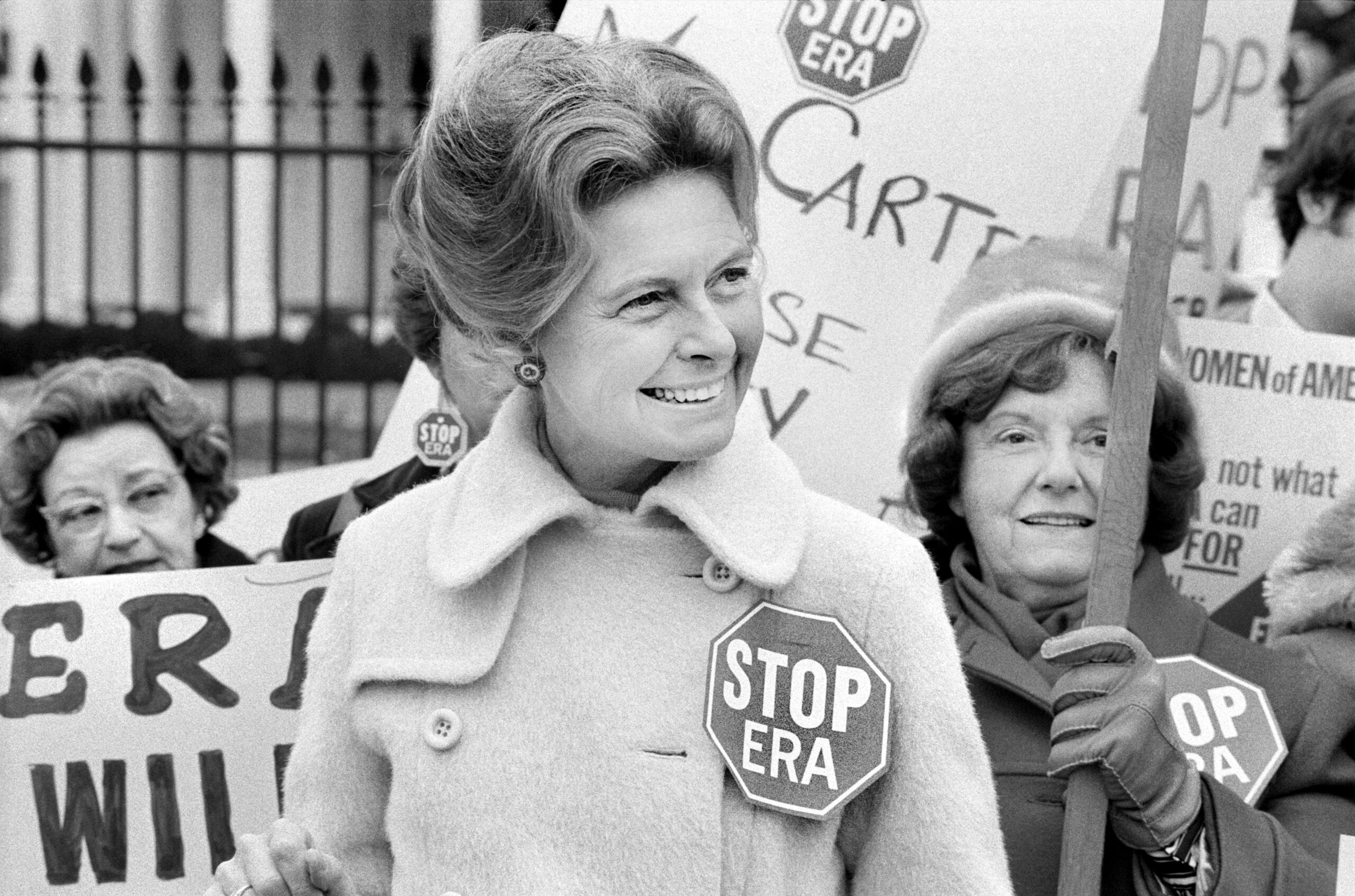The Equal Rights Amendment Is Still About Punishing Women
Men and women, despite our best efforts, are different, and “the same for both” is a shabby standard of treatment.

The Equal Rights Amendment is once again up for debate in the Senate next week, and Democrats and weak Republicans want you to believe that the only “debate” this time around is a procedural one. The original proposal to amend the U.S. Constitution to include a clause to guarantee identical legal treatment of both sexes passed in 1972 with a seven-year ratification deadline. Despite extending the deadline to 1982, the ERA never received the requisite approval from 38 of the 50 state legislatures.
Seeking to win some political points by resurrecting the dead amendment, Sen. Ben Cardin, the Maryland Democrat, has proposed a resolution, concurrent with a House resolution passed in 2021, to strike the ratification deadline from the text of the ERA, thus, presumably, reopening the amendment for passage by state legislatures. The Senate will debate the resolution Tuesday, an event that Democrats hope to keep at the bumper sticker level: Who doesn’t value men and women equally?
The amendment, however, does not pose the question of the equal inherent worth of men and women, as Cardin and his colleagues on the right and the left would have you believe. The question, instead, as most political ones, is one of prudence. Is it prudent to treat men and women identically—or, reframing it, to treat women as men? History, and most of the women in it, issue a resounding “no.”
This was the argument, advanced by female lawyer Phyllis Schlafly, that beat the ERA the first time around. Schlafly posited that the differences between men and women are substantial enough that treating them as legally the same would have monstrous consequences for women. Rather than grant women greater “equality,” the ERA would revoke many of their legal privileges. In particular, the amendment would spell the end of all sex-segregated spaces—including prison, where even today most Americans still recognize the need to keep the male rapists out of female felons’ cells. The draft was another concern, since the average service-age woman neither wants to be conscripted nor improves the effectiveness of a fighting force if she is.
Treating women as men would harm certain material privileges currently afforded to women, too. Motherhood would be further penalized in the job market than it already is, particularly in terms of paid maternity leave: The net result of requiring equal compensation for both, as anyone may guess, is always less leave for women, not more leave for men, so long as businesses must make economizing decisions. (And if you thought those arguing for such egalitarianism were all on one side of the political aisle, refresh yourself on the Republican Party’s talking points from last year’s Equal Pay Day.)
But perhaps the greatest loss to women is, once again, the degradation of men. Without the help of the ERA, women have come to rule practically every public sphere, from higher education to the boardroom, where even without a woman present, men feel the need to demonstrate their obeisance via self-censorship and passive aggression. When you treat women identically to men, it turns out, society merely adapts standards to favor more feminine characteristics, enabling women to succeed but feminizing men in the process. With the ERA in place, it’s worth asking if any part of society would be permitted to exhibit the masculine virtues.
Subscribe Today
Get daily emails in your inbox
But degraded men degrade the quality of women’s lives, too, leaving both sexes dissatisfied. Our own eyes and ears tell us this, and if they didn’t, a whole body of research on female hypergamy—not to mention the increasing number of unmarried women, and the fact that so many women have fewer children than they wish—does. Women who desired to rule over men are finding that, having in many ways achieved ascendancy, it is not so glorious as they had hoped. Rather than climb the corporate ladder to find satisfaction in work and an egalitarian partnership at home, they have found themselves as mid-level managers, with a landscape of potential male partners that are less than their equals—whether in education, earning potential, or social status. Meanwhile, the men who refuse to adapt to this feminine landscape are growing restive and even violent.
It’s a grim picture, but at least to those of us who spend significant time in the news, not entirely new. Indeed, much of what Schlafly and her compatriots feared would happen as a result of the ERA’s passage—including abortion on demand and the legalization of same-sex unions—has already come to pass regardless of constitutional sanction; a primary purpose for passing the ERA today might simply be ex post facto justification for change that has already been forced, regardless of parchment barriers.
This does not mean we ought to roll over and take our lashings, however, until two wrongs make a right. Prudence demands something different: a rule of law that recognizes the differences between men and women, indeed even celebrates them, as a necessary foundation for flourishing. But to the proponents of the Equal Rights Amendment, legal equality is not about quality of life, flourishing, or value. Equality, in this view, means sameness—which in truth looks like more of what we have seen, with both sexes increasingly unsexed, neutral cogs in the machine.